How to deal with moths on currants and gooseberries
You can't figure out who is eating your gooseberries and currants? Take a closer look! If the berries are braided with cobwebs, and green caterpillars sit on them, then this is none other than a gooseberry moth.
Next, you will learn how to protect gooseberries and currants from moths, how to process bushes to get rid of this malicious pest.
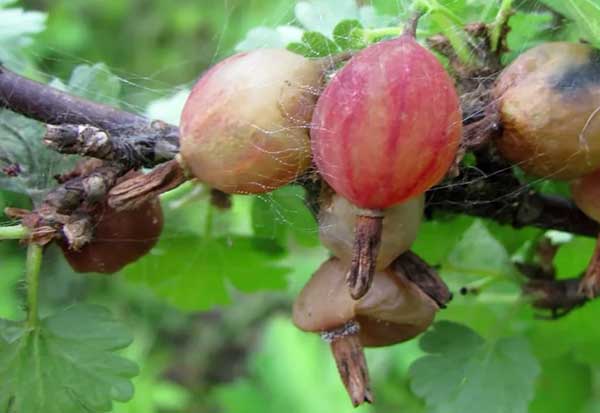
Content
Gooseberry moth: description of the pest, what is dangerous
Gooseberry moth Is a dangerous pest of gooseberries and currants (in some cases, it can also be found on raspberries).
As with glass, not butterflies harm, but caterpillars (larvae).
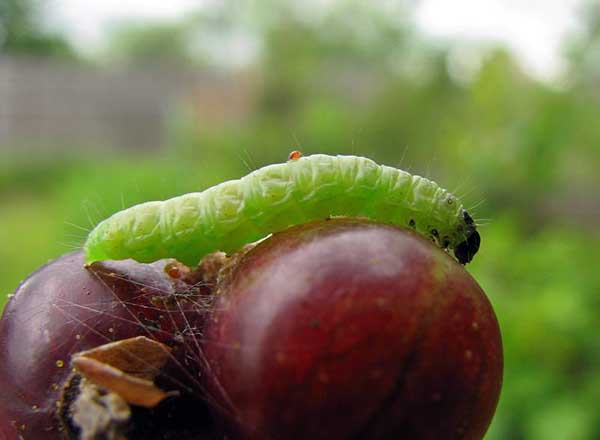
- Caterpillars entwine ovaries and fruits with cobwebs (sometimes leaves).
- Wherein on currants larvae damage (gnaw) the ovaries and green (unripe) berries outside, a on the gooseberry - from the inside (eat seeds and juice).
Each larva (caterpillar) of the moth can damage several fruits at once (8-15 pieces in currants or 2-6 in gooseberries), crawling from one berry to another.
- Further, the damaged berries begin to ripen prematurely, and then quickly dry up or rot.
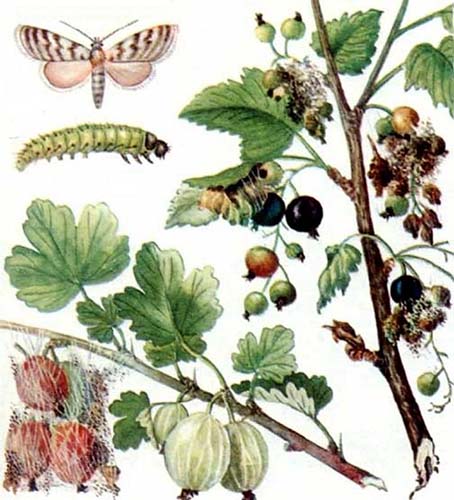
- Thus, with a massive defeat of the bush by moth caterpillars, the yield is noticeably reduced.
In its development, the moth goes through all the main stages (for a year - one generation):
- butterfly (imago) - appears during the beginning of flowering of gooseberries and currants, after mating, the females begin to lay eggs directly in the flowers or on the ovary (in rare cases, on branches or leaves).
- caterpillar (larva) - after emergence, it immediately fixes the fruits with a silk thread (entangles with cobwebs) and begins to feed, after 4-5 weeks it pupates.
- doll - hibernates in the surface soil layer.
- imago - repetition of the cycle.
In favorable years (if it is dry and warm), the development of the second generation is possible.
When and how to process currants and gooseberries from moth
Processing scheme
As a rule, gooseberries and currants are sprayed from moths at the following stages of development:
- Before flowering (in the “budding” phase);
- After floweringwhen formed small ovaries.
Thus, you need to carry out at least 2 treatments.
Chemicals
- Fufanon-Nova (Malathion (Karbofos), enteric insectoacaricide);
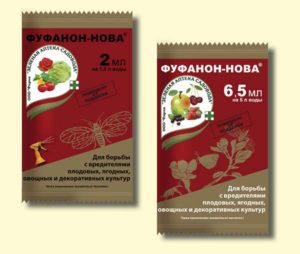
- Carbocin (Cypermethrin and malathion, enteric contact insectoacaricide);
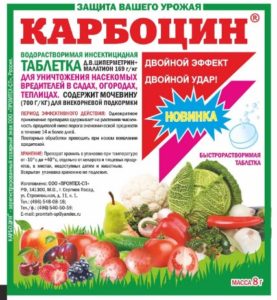
- Inta-Ts-M (Cypermethrin and malathion, enteric insecticide);
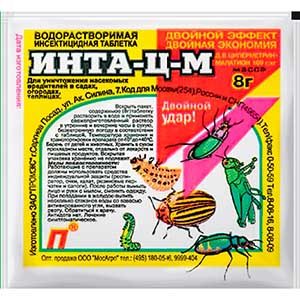
Carbocin and Inta-Ts-M - drugs analogs.
- Actellic (Pirimiphos-methyl (Actellic), enteric insecticide);
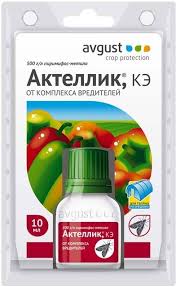
Note! You can also use against the moth:
- Clonrin (Zeta-cypermethrin and Clothianidin, systemic intestinal insecticide);
- Samurai Super, Sumition and other funds based on Fenitrothion.
However, these drugs are used only in agriculture (not in personal subsidiary plots).
Biological preparations
Biological agents insecticidal action:
- Bitoxibacillin (Bacillus thuringiensis var. thuringiensis, intestinal insectoacaricide);
Spraying during the growing season with an interval of 7-8 days. Minimum - 2 treatments.
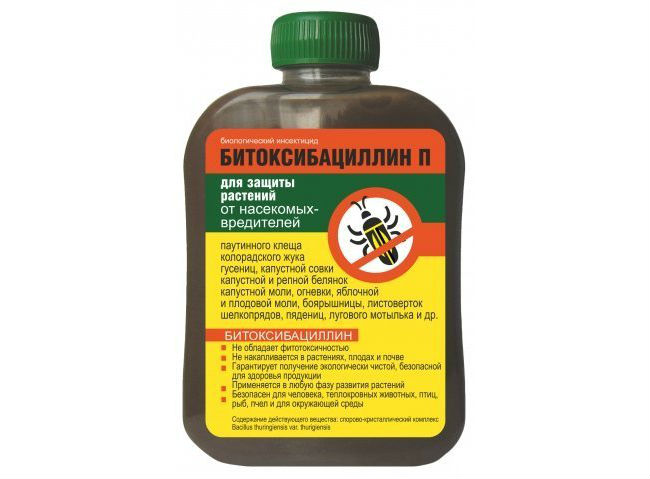
- Lepidocide (Bacillus thuringiensis var. kurstaki, intestinal insecticide).
Spraying during the growing season with an interval of 7-8 days. Minimum - 2 treatments.
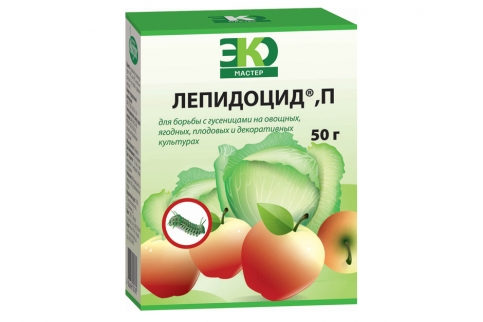
Folk remedies
In early spring (before the flowering of gooseberries and currants), you can try close the near-trunk circle with film, cardboard, roofing material, linoleum or any other covering material (spunbond), or mulch with humus or compost (with a layer of 3-5 cm) to prevent the butterflies from flying out to hunt physically. Naturally, after flowering and the formation of ovaries, the shelter will need to be removed.
If the caterpillars are moth have already settled in berries and you find damaged fruits, then they should be collect by hand in a separate container (jar), and then destroy (along with the larvae). This way you can reduce their number and possible damage.
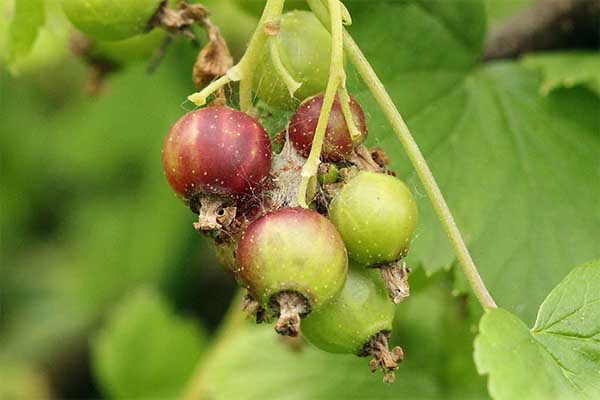
Well, now you know how to deal with the worst enemy of currants and gooseberries - gooseberry moth. Good luck and a crushing victory over the pest!

